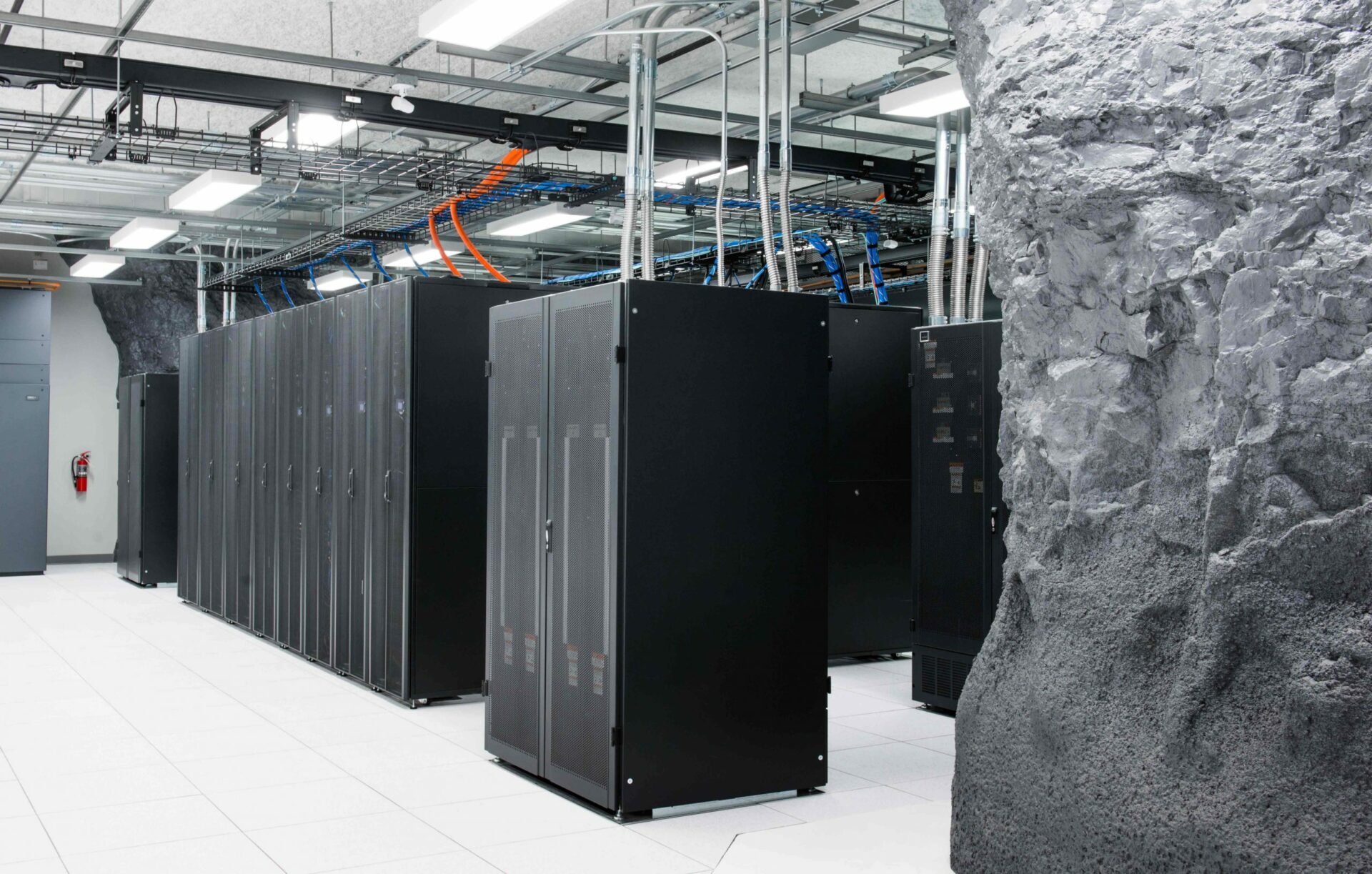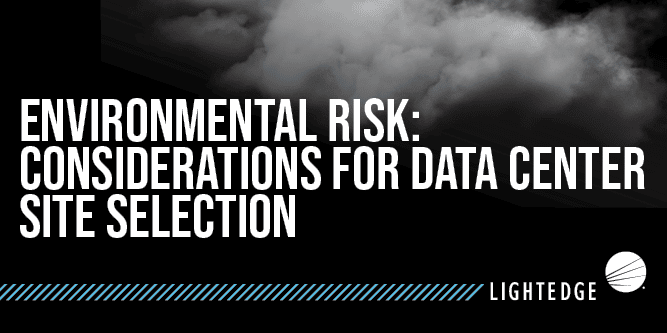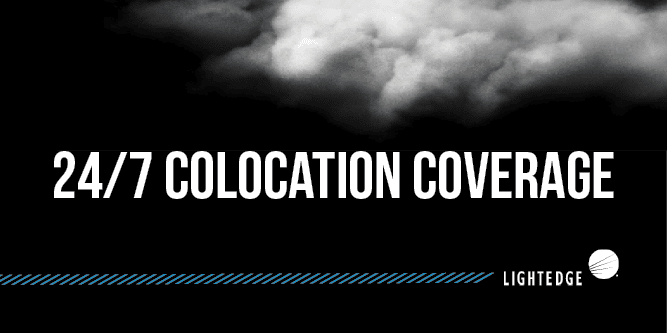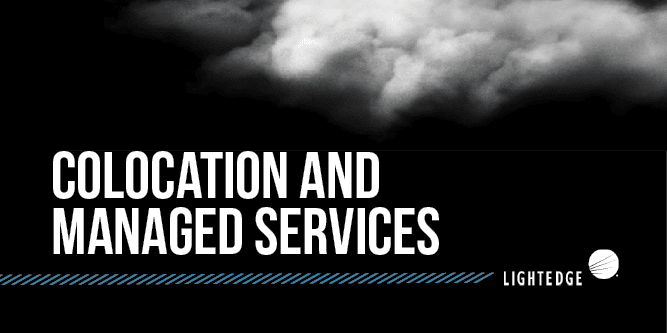Colocation is Striking Gold and Finding New Growth
March 12, 2020

Lightedge
Author

While many workloads are shifting to the cloud, colocation data center facilities hosting server hardware continues to be vital to the workplace, a new Spiceworks survey finds.
The data center is not going away; it is striking gold and finding new growth. A new report sheds light on this with greater details on the changes.
Spiceworks has released its 2019 State of Servers report that examines server infrastructure in the workplace which includes purchase plans, brand prevalence and perceptions. The report is sparking the idea that colocation facilities can be your pot of gold at the end of a rainbow.
The results of this survey, which included 530 IT buyers from organizations across North America and Europe, show that 98 percent of businesses currently run on servers, and 72 percent of businesses plan to purchase new server hardware within the next three years.
“While many workloads are shifting to the cloud, on-premises server hardware continues to be vital to the workplace, and the vast majority of businesses plan to buy servers for the foreseeable future, even if they’re also taking advantage of the cloud,” said Peter Tsai, senior technology analyst at Spiceworks in a statement.
With the continued growth of hardware purchases, many organizations continue to look for secure and compliant colocation facilities to store they critical infrastructure. In this article, we will uncover why colocation is the lucky bet when it comes to hosting infrastructure, and discuss when you know it is time to move to the cloud.
Server Purchase Drivers and Buying Behavior
The Spiceworks report examined factors that influence businesses to purchase new server hardware. Among organizations planning to buy server hardware, company growth is the top reason for new purchase with 50 percent. This is followed by performance degradations (38 percent), and reliability issues (34 percent).
When breaking down the data by company size, the report found that enterprises are more likely to purchase new servers due to company growth.
They are also more likely to buy new servers on a schedule outlined in a corporate tech replacement policy. Conversely, the smallest businesses, which also tend to have the smallest IT budgets, are more likely to use their server hardware until the very end as they wait until hardware failure or reliability issues prompt new server hardware purchases.
It is important to note who the decision makers are when it comes to IT buying patterns. According to Spiceworks’s State of IT Budgets report, IT decision makers (e.g., CIOs, IT directors, IT managers) are twice as likely to be the sole decision makers for server hardware purchases compared to business decision makers (e.g., COOs, business line directors, finance managers).
Buying Behavior
When purchasing new hardware, businesses have options: buy directly from the manufacturer through the channel, or some combination of both. According to the Spiceworks data, nearly half (48 percent) of businesses planning to purchase new servers will buy them directly from a manufacturer, 38 percent plan to go through a value-added reseller (VAR), 26 percent plan to purchase through an online retailer, and 18 percent plan to buy through a managed services provider (MSP).
Looking at purchasing behavior by company size, they found that enterprises are just as likely to purchase servers through a VAR than through the manufacturer. Conversely, smaller companies, which often have less access to specialized IT expertise, are more likely to seek out assistance from an MSP compared to their larger counterparts.
They also found that mid-size companies, typically with more access to IT expertise but often price sensitive, are the companies most likely to purchase servers via an online retailer.
So, what does all of this mean for colocation providers? It means that no matter the company size, big or small, they need to find the safest and most secure location to store their servers.
While cloud is the smart choice for some companies, colocation facilities are still able to empower organizations using hardware in a reliable way.
The Future of Server Hardware
Despite a shift of many workloads to the cloud, physical servers will continue to be vital to the overwhelming majority of businesses. How and why companies buy server hardware depends largely on company size, business growth, and events such as Windows Server 2008 end of service.
Looking forward, servers will continue to evolve. Currently businesses have access to more processor options due to competition between hardware providers.
IT departments can look forward to continued advancements in storage technology that should put faster disk performance in reach of more organizations.
Finally, the hyperconverged infrastructure (HCI) trend that consolidates IT infrastructure will continue to grow, inching closer to mainstream adoption in the coming years.
New Technologies Seeing Growth
Spiceworks found 16 percent of respondents currently use AMD processors in their servers and usage is expected to increase to 21 percent in 2020. Also, 93 percent had Intel, which means a mix of the two is due to overlap.
Regarding HCI, 38 percent of firms surveyed use it, which will pop to 46 percent in 2020. HCI is growing more popular because it is a turnkey solution with little integration required. Just install and turn it on.
How Colocation is Empowering Server Growth
Starting around 2010 and accelerating through today, the factors that led many businesses to build and maintain in-house data centers began to break down. Specialized data center operators have matured to a point where the difference between renting space in purpose-built, compliant data centers vs. staying in-house, no longer makes financial sense.
When simply looking at cost, a rack with 5kW of redundant power can be purchased for $1k-$2k/mo. Building a small data room in an office building can easily run well into six figures.
From a facilities perspective, the ROI is simply not worth it and the risk of getting it wrong is too great. Not to mention, the distraction and loss of productivity for the business associated with tying their IT resources up building and operating a data center or data room.
Control
When we focus the question of control around what purpose-built data centers bring to the table, we quickly find that sufficient control of key elements still remains in the hands of businesses. Data center providers offer some fairly straight forward and easily verified benefits. These include:
- Reliable and scalable power
- Space
- Cooling
- Compliant physical security
- Always on network
Building and operating a data center on a DIY basis is a very risky and somewhat pointless exercise in today’s environment. Good design, proper installation, and proper operation lead to good results. From the organizations’ perspective, they want power to always be available, cooling to always work, and strict physical security mechanisms to prevent unauthorized access to their assets with the logs to meet auditing requirements.
For each of these parameters, colocation data center providers can provide measurable proof of these functions and have staff dedicated to sustaining this goal. As illustrated with the exploration of proximity, performance is limited by the distance between the users and the application.
Growth
Another major benefit to utilizing a data center provider is the ability to scale power, cooling, and space quickly and cost effectively which allows businesses to grow as needed without hitting major speed bumps that limit growth. Businesses should still do their due diligence, but the state of the art for data center design and operation has reached a level where the responsible move is to avoid reinventing the wheel.
Proximity is definitely the most subjective of these concerns a business may have with migrating their IT assets to a specialized data center facility.
When is Cloud the Right Choice?
Nearly every business already uses cloud computing in some sense (Gmail, Google Docs, online storage services, etc.). Moving critical business applications to the cloud, however, is another matter.
To find out if migrating to the cloud is right for your business, conduct a thorough inventory of your applications and hardware.
Not all applications lend themselves to running in a virtualized environment. In some instances, it may make sense to replace legacy applications with newer SaaS based offerings. In others, it may be more advisable (that is simpler, faster, and less costly) to maintain those legacy applications on-premises but simplify mobile access by developing modern systems of engagement atop them.
Evaluate Your Computing Environment
There are five key questions that every business should answer to minimize risk and maximize benefits in a cloud migration:
- How will migrating to the cloud affect our applications — and our business?
- Are we re-factoring our applications to perform in a cloud environment? If so, how?
- What are we doing to test cloud deployments differently than with traditional two- or three-tier applications and associated testing methodologies?
- How will our deployment and management strategies change with the cloud?
- Now that we’ve migrated to the cloud, do we still need to monitor things, or are we relying on a trusted vendor partner to handle that?
Assess your Workload Requirements
Cloud computing is well suited to situations where workloads are highly variable and irregular, alleviating the need for companies to tie up investment in servers that are idle or under-utilized much of the time.
As TechTarget notes, “Applications that reach peak resource utilization loads periodically and quickly retract, such as holiday season consumer sales or monthly payroll processing, are good candidates to migrate onto public cloud services. Rather than buy hardware that often sits idle, companies pay for the extra capacity only when it is used…Another example is application development and testing, where businesses set up and tear down workloads on a consistent basis.”
SaaS Takeover
Software as a Service (SaaS) adoption is a new disruptive factor also contributing the demise of in-house data centers. Businesses are trading in their old client/server applications for SaaS versions of the applications that are hosted by the vendor in the cloud.
This has reduced the need for large amounts of compute and storage resources to be maintained within businesses and also freed up staff and other resources to focus more on the core business mission. Digital Transformation, for many businesses, can simply mean making an existing process more efficient and the trend of moving to SaaS versions of applications that support core business functions is definitely part of that trend.
Don’t Leave the Security of your IT Infrastructure up to Luck
Finding a colocation provider that meets the security, network availability, scalability, and support that your organization require may seem daunting. Thankfully, Lightedge is top performing in each of those categories, but don’t take our word for it. Take a virtual tour through one of Lightedge’s seven data center colocation facilities with the hosts of Off the Cuf to see our world’s most secure data center.
As a top-tier colocation services provider, we deliver a high level of availability and reliability through secure, certified data centers and dedicated staff onsite. Our customized and scalable services give you the control, whether you need a colocation rack, cage, or custom suite now or in the future.
Lightedge’s highly trained compliance and security experts take the guesswork out of keeping your business protected. Trust our expertise to ensure you are covered through our security and compliance services, including risk management, information security, audit preparedness, and support.
With geographically dispersed facilities across all of the US power grids, our data centers are the heart of our operation and yours. We have a wide range of colocation and disaster recovery solutions delivering advanced shared infrastructure designed to enable operational and financial efficiency, reducing the burden on your IT staff.
Lightedge business support services are available 24 hours a day, 7 days a week, no exceptions. Our technical support starts with direct access to technicians in Lightedge’s Network Operations Center (NOC) via a toll-free number for emergencies. The MyLightedge Portal allows you to open tickets, track progress and more for all of your services. Get in touch with a colocation expert today.
Related Posts:
- 6 Important Considerations For Choosing A Secure Colocation Provider
- Des Moines’s Newest Cash Crop: Data Centers
- Debunking Underground Data Center Misconceptions
- 5 Reasons Your Growing Business Needs Compliant Colocation
- The Best of Both Worlds: Colocation and PCI DSS Compliance
- Data Center Design: Compliance, Location and Regulations
- Data Center Security: Why Providers Should Build Security into Every Detail
- What to Look for in HIPAA Compliant Hosting
- Data Center Checklist: 5 Factors for Choosing a Data Center
- Data Center Location: 4 Things to Consider
- What to Look for in HIPAA Compliant Hosting
- Underground Data Center Storage: What to Know & How to Avoid Failures
- Moving to the Cloud from Traditional IT: Why and How


